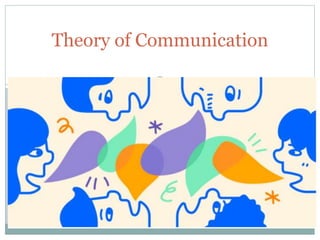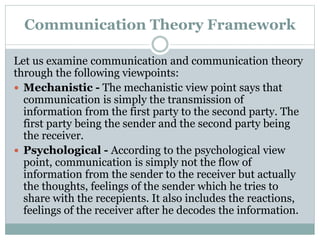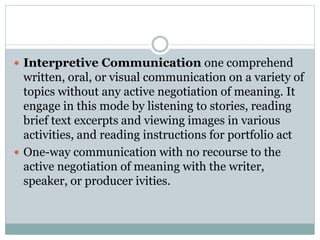The document discusses theories of communication. It defines communication as the transmission and reception of ideas, feelings, and attitudes between individuals. It states that all living beings communicate, though the methods differ between species. Communication theory proposes that communication occurs through various means like sounds, movements, or visible changes. The document also outlines different frameworks for viewing communication, including mechanistic, psychological, social, systemic, and critical perspectives.



























